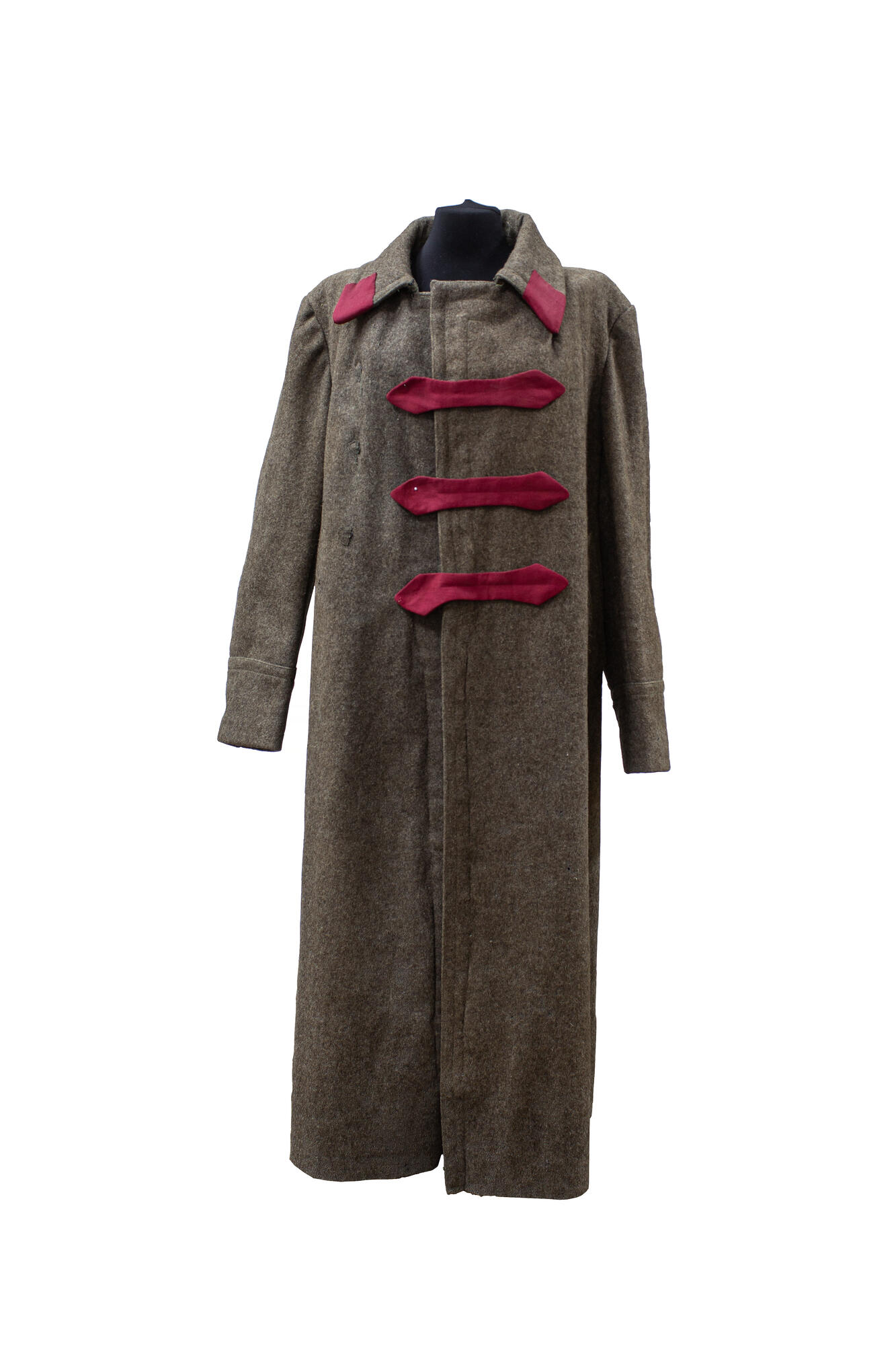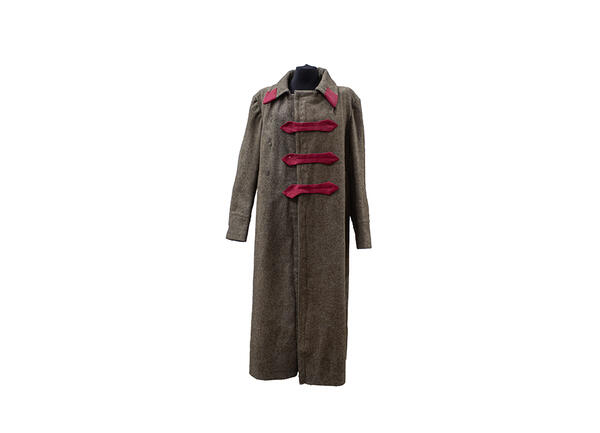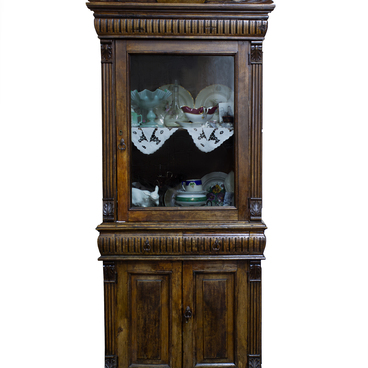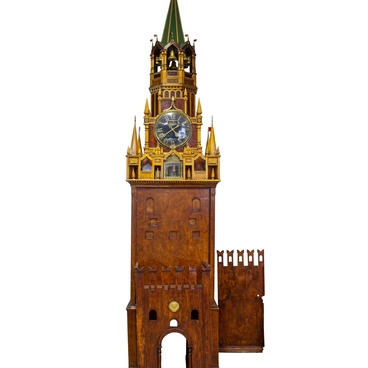The museum houses a 1918 woolen greatcoat — a warm uniform coat with a fold on its back. Soldiers wore greatcoats during combat activities and winter marching.
At first, there was not much choice regarding materials for military clothing. Linen did not provide warmth in bad weather, hemp was coarse and could only be used for ropes and sails, and cotton production was still in its initial stages. Woolen cloth appeared in the Russian Empire under Peter I. By the tsar’s decree of 1714, the first woolen cloth factories were opened in Moscow and Kazan and were intended for supplying the army. For cost reasons, greatcoats were made from hodden cloth.
In 1796, during the reign of Alexander I, greatcoats were officially introduced into the Russian imperial army. They were long-sleeved, had a turn-down collar and six buttons. Soldiers were required to wear woolen cloth uniforms throughout the whole year. In the summer, the coat was worn over a shirt, and in the winter — over a sheepskin coat.
In January 1798, greatcoats were removed, but in 1802, they were reintroduced, this time as part of a uniform for the lower ranks. That same year, a belt was added to the back of greatcoats, consisting of two halves fastened with a button, which pulled the clothes together at the waist.
The 1802 greatcoat model had high stand-up collars and very long sleeves. During frosts, the sleeves completely covered hands to keep them warm, and in warmer months, they were rolled up.
After the February Revolution of 1917, the Red Guards were formed. They did not have an established uniform: they adopted the uniforms that were worn by the Imperial Russian army, only removing shoulder boards. As an identification sign, a piece of red cloth with the Russian inscription meaning “The Red Guard” was tied to the sleeves, and a red ribbon was attached to the headgear.
However, when the White Army introduced their military uniforms, which were made in the same fashion, the Red Army decided to change theirs. So, in 1918, the Military People’s Commissariat of the RSFSR announced a contest for the best design of the uniform. According to its results, the military uniform of the Workers’ and Peasants’ Red Army now consisted of a greatcoat, like the one from the museum’s collection, a field shirt, khaki trousers and a peaked cap. Infantry and cavalry greatcoats were sewn from the simplest cheap cloth, while clothes for officers and senior command personnel were made from expensive materials.
At first, there was not much choice regarding materials for military clothing. Linen did not provide warmth in bad weather, hemp was coarse and could only be used for ropes and sails, and cotton production was still in its initial stages. Woolen cloth appeared in the Russian Empire under Peter I. By the tsar’s decree of 1714, the first woolen cloth factories were opened in Moscow and Kazan and were intended for supplying the army. For cost reasons, greatcoats were made from hodden cloth.
In 1796, during the reign of Alexander I, greatcoats were officially introduced into the Russian imperial army. They were long-sleeved, had a turn-down collar and six buttons. Soldiers were required to wear woolen cloth uniforms throughout the whole year. In the summer, the coat was worn over a shirt, and in the winter — over a sheepskin coat.
In January 1798, greatcoats were removed, but in 1802, they were reintroduced, this time as part of a uniform for the lower ranks. That same year, a belt was added to the back of greatcoats, consisting of two halves fastened with a button, which pulled the clothes together at the waist.
The 1802 greatcoat model had high stand-up collars and very long sleeves. During frosts, the sleeves completely covered hands to keep them warm, and in warmer months, they were rolled up.
After the February Revolution of 1917, the Red Guards were formed. They did not have an established uniform: they adopted the uniforms that were worn by the Imperial Russian army, only removing shoulder boards. As an identification sign, a piece of red cloth with the Russian inscription meaning “The Red Guard” was tied to the sleeves, and a red ribbon was attached to the headgear.
However, when the White Army introduced their military uniforms, which were made in the same fashion, the Red Army decided to change theirs. So, in 1918, the Military People’s Commissariat of the RSFSR announced a contest for the best design of the uniform. According to its results, the military uniform of the Workers’ and Peasants’ Red Army now consisted of a greatcoat, like the one from the museum’s collection, a field shirt, khaki trousers and a peaked cap. Infantry and cavalry greatcoats were sewn from the simplest cheap cloth, while clothes for officers and senior command personnel were made from expensive materials.



